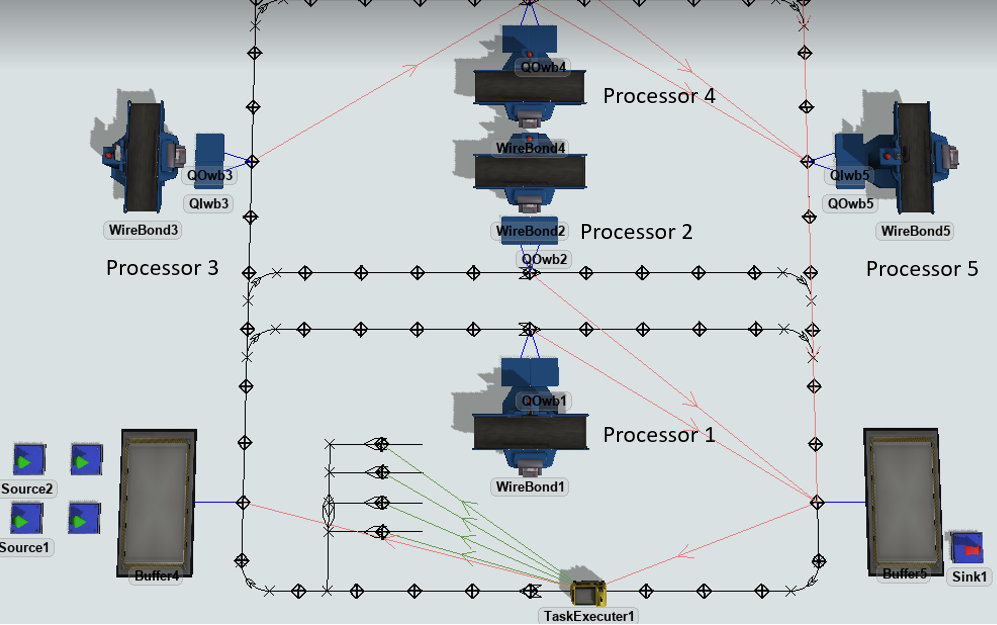Hi there,
 I would like to get some tips on my simulation.
I would like to get some tips on my simulation.
To simulate the actual site, items are sent from source to processors in random. AGVs capacity is 4, it can carry 4 items at one time. Items are sent to random ports, so in Flexsim default setting, the route of AGV depends on the output port of items. For example, it might send to processors 3>4>5>2.
What I want to achieve is, AGVs will plan the route which connects the most available processor. If all processors are available based on the pic above, AGV 1 will only carry items planned to transport to processors 3, 4 and 5. AGV 2 then carry items planned to transport to processors 2. AGV 3 then carry items planned to transport to processors 3. Moreover, If there are only 2 items need to transport to processors 3, AGV will only transport 2 items althought it has capacity of 4.
Due to my limited knowledge on Flexsim, I haven't find a way to achieve this, is this able to do in Flexsim?
